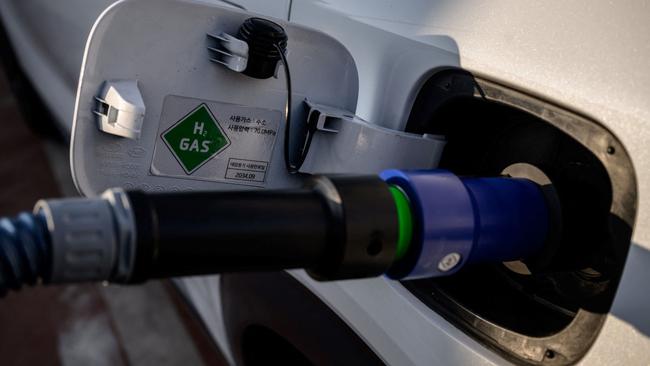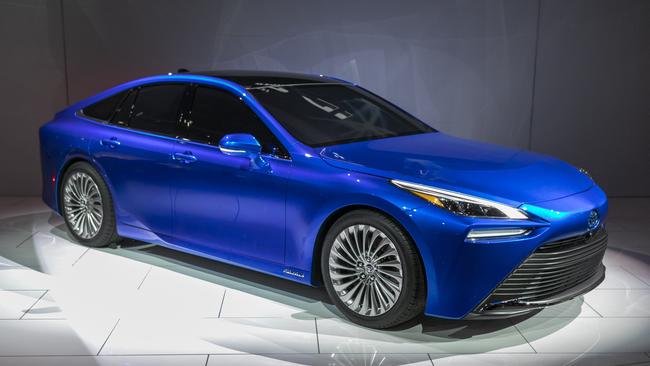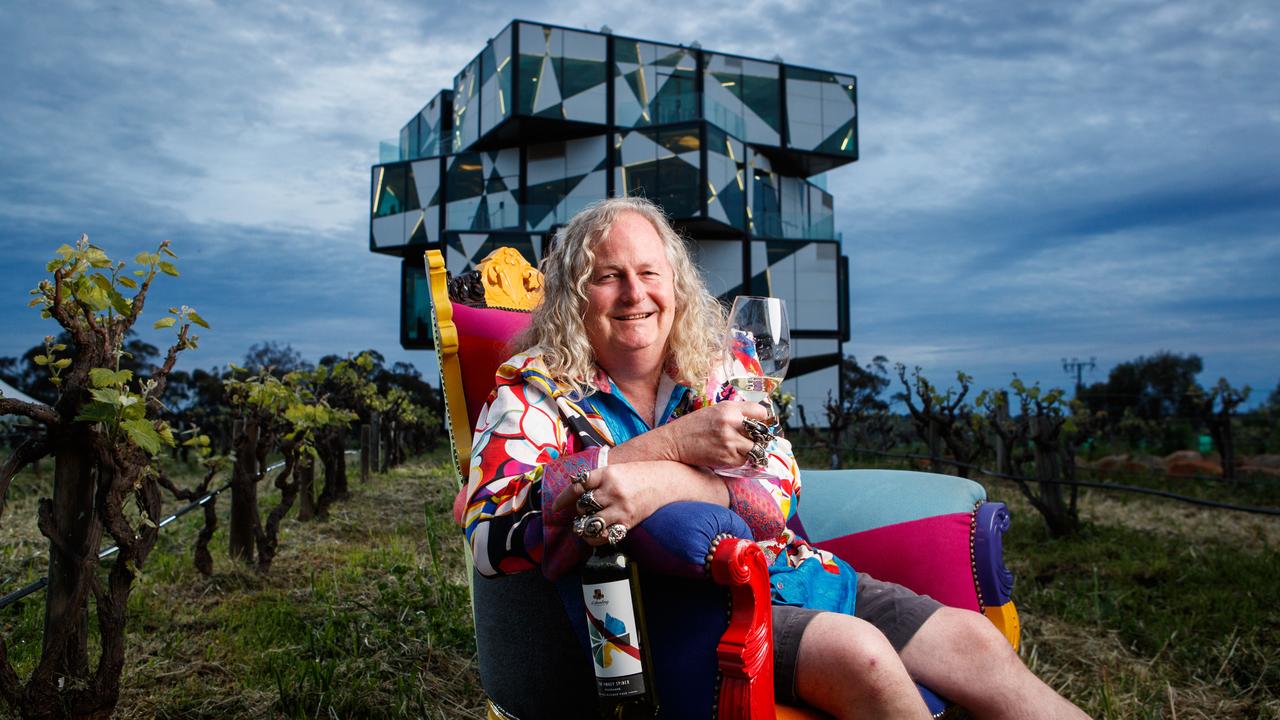New energy in Australia-Japan ties as hydrogen takes centre stage
Closer ties and COVID competence are helping convince more Japanese firms to plough big money into new Australian ventures.

Japanese companies are keen to spend some of the $US5 trillion ($6.4 trillion) in cash on their balance sheets on Australian hydrogen projects, technology and industries such as housing, according to Herbert Smith Freehills adviser and former Wallaby Ian Williams.
Williams, who has had a career in advising Japanese companies on investing in Australia after retiring from rugby, said Japanese companies were refocusing their investments in Australia away from their traditional targets of coal and LNG.
They were now looking to work with companies on decarbonising their economies with a heavy investment in hydrogen as well as other new sectors.
He said there were 13 cases of collaboration between Australian and Japanese companies on hydrogen.
These included the Hydrogen Energy Supply Chain (HESC) project in the Latrobe Valley backed by Kawasaki Heavy Industries, J-Power, Iwatani, Marubeni and Sumitomo; a green hydrogen production plant at Gladstone backed by Sumitomo and Japan’s JGC Holdings; the H2U Eyre Peninsula Gateway project backed by Mitsubishi Heavy Industries; and the INPEX hydrogen generation testing facility in Darwin backed by Japan’s ARPChem.

Mr Williams said Japanese companies were also looking for opportunities to invest in technology skills in areas such as financial technology, while also seeing Australia as a place with a growing population, suitable for expansion into new consumer-related sectors such as housing and healthcare at a time when Japan’s population was declining.
He said Japan was also upgrading its view of Australia as a place to invest given the good management of the COVID pandemic and strengthening political ties between the two governments.
“Japanese companies have substantial cash reserves on their balance sheet — an estimated $US5 trillion last year — and access to low-interest finance,” Mr Williams said. “Australia is widely considered to have managed its exposure to COVID well and is expected to recover more quickly than other key investment destinations for Japan.”
He said COVID had interrupted a strong upward trajectory of Japanese investment into Australia, with 110 deals in the three years from 2017 to 2019 including five mega-deals worth more than $1bn.
These included Mitsubishi UFJ Financial’s $4bn purchase of Colonial First State, Nippon Paint’s $3.8bn takeover of Dulux and Nippon Paper’s $1.7bn purchase of the Australian and New Zealand cardboard packaging arm of Orora.
Other major investments in recent years have included Nippon Life’s investment in MLC Life.
While the number of new deals had fallen off in 2020 because of COVID, with potential Japanese investors unable to travel to Australia, he expected that the momentum for new investments would step up in the next 18 to 24 months.
“Post-COVID, Australia is more attractive than it has ever been,” Mr Williams said.

“Investment in Australia looks relatively more attractive than other countries when you look at the difficulties that Europe and the US have had in managing the pandemic.”
Mr Williams said Australia “ticks a lot of important investment criteria” for Japanese companies looking to expand offshore.
“Australia has had a high net population growth, strong economic growth and a stable legal and political framework,” he said.
Political relations between the two countries were also getting closer with Prime Minister Morrison the first world leader to meet Japan’s new PM Yoshide Suga in person during a lightning visit to Tokyo last November.
“Australia is getting even closer with Japan,” he said.
“There is a strong symbolism in Morrison going to Japan to meet Suga even though he had to quarantine for two weeks when he got back.”
Mr Williams said there was distinct shift in the sectors where Japanese companies were looking to invest in Australia, away from mining and energy.
“Japanese companies have seen Australia as a huge source of traditional energy,” he said.
“A quarter of our coal and LNG is sold to Japan.
“But there are big changes with the Japanese Prime Minister having committed the country to have zero carbon emissions by 2050 and Japanese companies looking to move away from carbon-emitting industries to new sources of energy.”
Mr Williams said Japanese companies were now selling out of coal but seeing Australia as a source of new technology in areas such as renewable energy, fintech and other sectors.
“Japanese investors are now looking at Australia as a sophisticated market,” he said. “Companies like Wisetech and Atlassian have given Australia a lot more standing in the international market.”
Mr Williams said hydrogen had the potential to attract even more investment from Japanese companies into Australia.
“There is now a new joint imperative,” he said.
“Japan and Australia are both heading in the same direction, looking to decarbonise and produce enough energy to support their economies in a socially acceptable way.”
“There is a fundamental change in the way in which Japan is viewing investment opportunities in Australia. Rather than just seeing Australia as a place to source energy, we are now jointly developing new energy.”
Mr Williams said he expected there would be continued investment in the Australian financial sector by Japanese companies, as evidenced by the move by Shinsei Bank to buy a 10 per cent stake in non-bank lender Latitude for $300m last month, and a new joint venture between Mitsubishi UFJ and Macquarie Group’s Vestone Capital, a company focusing on the leasing of information technology and energy assets.
He said the investment by Japanese home builder Asahi Kasei in the MFH housing company (formerly known as McDonald Jones Homes) was another sign of the times.
Tokyo-listed Asahi Kasei took a 40 per cent stake in the company, which is Australia’s third-largest home builder, in 2017. It recently doubled its investment to 80 per cent following the retirement of company founder Bill McDonald.
Mr Williams, who became chairman of the company after helping to negotiate the initial deal, said the home building industry in Australia was growing strongly thanks to government policies such as the HomeBuilder stimulus program and low interest rates, while the Japanese population was projected to decline from its current level of 126 million to below 100 million by 2050.
“Asahi sees Australia as an attractive market,” he said.
He said Asahi was prepared to invest new capital in the NSW-based home building company to help it to expand in Australia, including South Australia and Victoria.
He said there were now four Japanese companies in the Australian housing market including Japan’s largest home builder, Sekisui House and Daiwa House. He said Japanese home builders had a different approach to Australian home builders as they manufactured their own building materials rather than bought them from outside suppliers.
He said the Japanese companies were bringing this approach to their investment in the Australian housing market.
“Japan has a more vertically integrated model which their companies are bringing to Australia,” he said.
Mr Williams said there had been concerns in Japan over the big writedowns by Japan Post in 2017 as a result of its $5bn purchase of Toll Holdings in Australia in 2015.
He said this had caused some negative reassessment of investing in Australia in Japan a few years ago but he said most Japanese investors now saw the problems as specific to the deal itself.
“That deal has been painful and unfortunate,” he said.
“It got a lot of publicity because Japan Post was owned by the government and it has reflected negatively on the opportunities in the Australian market,” he said.
“But people have understood that this was specific to Japan Post rather than a general trend about Australia.”
Mr Williams said Japanese companies were seen as “good corporate citizens” in Australia and so far had had little difficulty in gaining approval from the Foreign Investment Review Board for proposed investments.
In his 25 years advising on Japanese investment proposals into Australia he had never had a deal rejected by FIRB.
“Japanese investment in Australia is welcome,” he said. “Japanese companies are seen as good corporate citizens and, by and large, have been successful in growing the Australian economy.”
“There has been a hiatus because of COVID.”




To join the conversation, please log in. Don't have an account? Register
Join the conversation, you are commenting as Logout